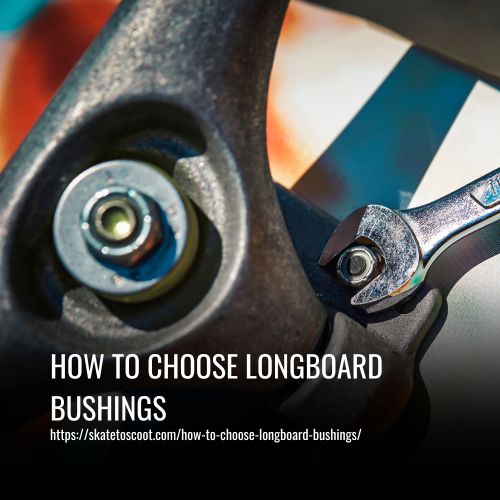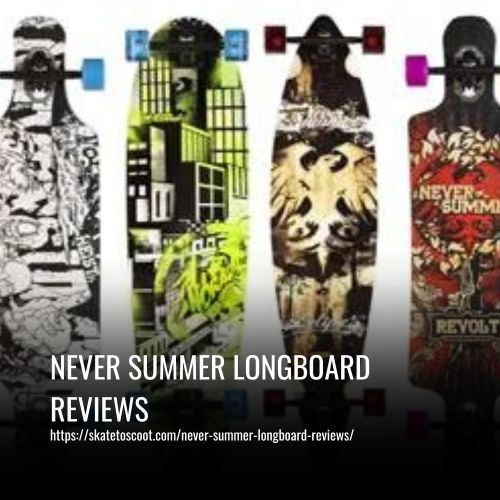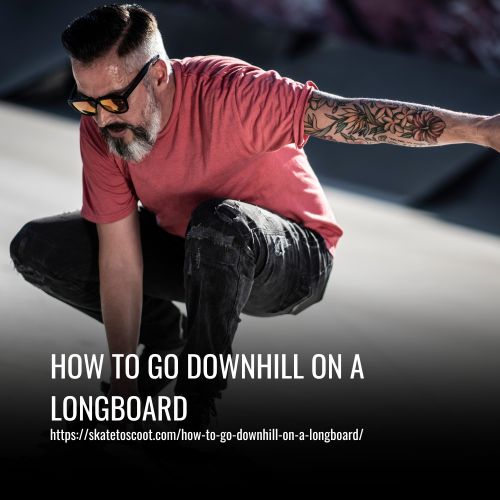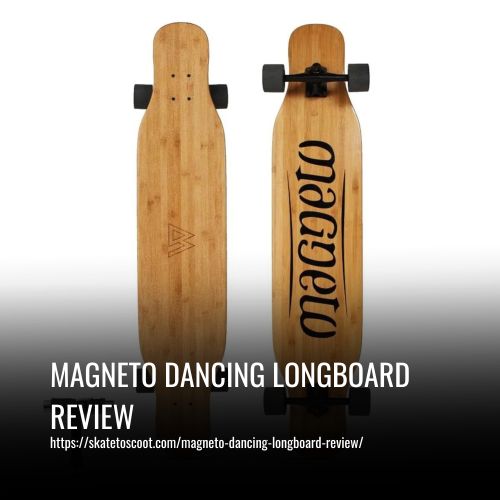As an Amazon Associate we earn from qualifying purchases.
When choosing longboard bushings, the hardness or durometer rating is an important factor to consider. The durometer rating is measured on a scale from 73a to 101a, with lower numbers indicating softer bushings.

How to Choose Good Longboard Bushings
There is no universal solution when it comes to choosing longboard bushings. The ideal bushings for each individual are the ones that provide the desired board feel and enable the desired maneuvers.
To start, consider your riding style and weight. If you are a heavier rider or prefer high-speed downhill riding, harder bushings like barrels or eliminators will provide the stability you need. On the other hand, if you want effortless and smooth turns, cone bushings are a great choice.
Shape and durometer (hardness) ratings are also important factors to consider. Different shapes, such as barrels or cones, offer varying levels of responsiveness and stability. Durometer ratings indicate how soft or hard the bushing is, with higher ratings being harder.
Experimenting with different combinations of bushing shapes, durometers, and washers will help you find the perfect set-up for your specific preferences. So, take the time to understand how these factors influence the performance of your longboard, and enjoy customizing your ride to suit your individual style.
What Are Bushings on a Longboard?
Bushings are an essential component of a longboard setup. These urethane rings are placed around the kingpin of the longboard truck to provide a smooth and controlled ride.
The primary function of bushings is to prevent metal-to-metal contact between the various parts of the truck, thereby increasing their lifespan. However, their impact on the ride quality is equally significant.
Most bushings on the market are barrel-shaped, while some are cone-shaped. They come in various sizes and hardness ratings, allowing riders to customize their setup according to their preference and riding style.
The bushing seating, where these rubbery rings are placed, plays a crucial role in determining the overall feel of the longboard. Some bushings fill up this space and provide a tight fit, which enhances control and support. These restrictive bushings allow riders to use softer durometer bushings without sacrificing control and stability.
Small vs. Large Bushings
When it comes to choosing bushings for your longboard, size matters. The size of your bushings can greatly affect how your trucks turn and how quickly they return to their central position.
If you opt for larger bushings, they will have more urethane, which means they will have a greater rebound and be more supportive compared to smaller ones of the same durometer rating. Larger bushings also struggle less when it comes to forcing the hanger back to the center, allowing for a more stable ride.
On the other hand, smaller bushings are typically more responsive and turny. They allow for quicker turns and a more maneuverable ride. However, they may not provide the same level of stability as larger bushings.
Ultimately, the choice between small and large bushings depends on your personal preference and riding style. If you prefer a looser and more turn setup, smaller bushings may be the way to go. If stability is a priority, larger bushings will provide maximum support and control.
Roadside vs. Roadside Bushings
When it comes to choosing longboard bushings, it’s important to consider the difference between roadside and board-side bushings. Roadside bushings are the ones that point down toward the road when you flip your board upside down, while broadside bushings face up toward the underside of the deck.
The bushing on the broadside is responsible for carrying the majority of your weight when you step on the longboard. It plays a crucial role in determining how your board responds when you lean and turn, particularly when approaching the truck’s maximum lean.
In addition, the bushing on the broadside is important for keeping your trucks and components secure. It is essential to consider the shape, size, and durometer rating of the bushing.
There is the option to combine bushings of various shapes, sizes, and hardness ratings to personalize the sensation of your trucks. For instance, you can match a barrel-shaped roadside bushing with a cone-shaped broadside bushing to achieve a one-of-a-kind riding experience.
Consider your preferences and riding style when choosing between roadside and broadside bushings, as this decision can greatly impact your longboarding experience.
What bushings already come with my board?
Please refer to the table below to determine the board and setup that best suits your needs.
| Fuel | Pro/Elite Complete | Sabre R-Type Street 93A |
| Swift | Elite Complete | Sabre R-Type Street 93A |
| Dagyr | Pro/Elite Complete | Sabre H-Type Street 96A |
| Samba | Elite Complete | Sabre X-Type SuperCarve 86A |
| Freebyrd | Pro/Elite Complete | Sabre F-Type Carve 90A |
| Mako | Pro/Elite Complete | Sabre F-Type Carve 90A |
| Throttle | Pro Complete | Sabre H-Type Street 93A |
| Throttle | Elite Complete | Sabre F-Type Carve 90A |
| Minnow | Pro Complete | Sabre H-Type Street 93A |
| Minnow | Elite Complete | Sabre F-Type Carve 90A |
| Legend X-Flex | Pro/Elite Complete | Sabre F-Type Carve 90A |
| Kisiwa | Elite Complete | Sabre R-Type Carve 93A |
Dialing Durometer And Shape For Weight:
The shape and weight are the two main factors in dialing your bushings.
| Bushing Shape | Weight Range | Durometer Range |
|---|---|---|
| Cone | 50 – 100 lb (23 – 45 kg) 100 – 140 lb (45 – 64 kg) 140 – 170 lb (64 – 77 kg) 170 – 200 lb+ (77 – 91 kg+) | 80a – 90a 85a – 95a 90a – 100a 95a – 100a |
| Barrel | 50 – 100 lb (23 – 45 kg) 100 – 140 lb (45 – 64 kg) 140 – 170 lb (64 – 77 kg) 170 – 200 lb+ (77 – 91 kg+) | 80a – 90a 85a – 95a 90a – 100a 95a – 100a |
| Large Cone | 50 – 100 lb (23 – 45 kg) 100 – 140 lb (45 – 64 kg) 140 – 170 lb (64 – 77 kg) 170 – 200 lb+ (77 – 91 kg+) | 70a – 90a 75a – 95a 85a – 100a 90a – 100a |
| Large Barrel | 50 – 100 lb (23 – 45 kg) 100 – 140 lb (45 – 64 kg) 140 – 170 lb (64 – 77 kg) 170 – 200 lb+ (77 – 91 kg+) | 60a – 85a 65a – 90a 75a – 95a 85a – 100a |
| Street/Traditional | 50 – 100 lb (23 – 45 kg) 100 – 140 lb (45 – 64 kg) 140 – 170 lb (64 – 77 kg) 170 – 200 lb+ (77 – 91 kg+) | 80a – 90a 85a – 95a 90a – 100a 93a – 100a |
Types of Longboard Bushings
Below are the three main types of longboard bushings that are available for purchase:
- Barrel Longboard Bushings: Barrel bushings are a popular choice for riders who prioritize stability and control. They feature a cylindrical shape and offer a balanced level of responsiveness for a smooth and controlled ride. Barrel bushings are commonly used in downhill riding and by heavier riders who require maximum stability.
- Cone Bushings: Cone bushings are ideal for riders who prefer effortless and smooth turns. As the name suggests, cone bushings have a conical shape that allows for quick, nimble, and carve turns. They offer a looser and more responsive ride, making them a great choice for cruising and carving on flat terrain.
- Street or Traditional Bushings: Street or traditional bushings are the standard bushings that come pre-installed on most longboards. They provide a good balance between stability and maneuverability, making them suitable for a wide range of riding styles. These bushings are often of medium hardness and offer versatility for both beginner and experienced riders.
It’s important to note that some setups may benefit from tall cones or tall barrels. Tall bushings provide extra stability and control, making them suitable for riders who prioritize precision and want to minimize any wobbling or instability when riding at high speeds or carving aggressively.
1. Barrel Bushings: the Most Stable
Barrel bushings are known for providing stability and control to riders, making them the most stable option when it comes to longboard bushings. These bushings have a cylindrical shape that naturally offers more support compared to other shapes. There are different types of barrel bushings available, including standard-size barrels, large barrels (also known as stepped barrels), and tall barrels.
Barrel bushings are designed to fill up the bushing seat completely, ensuring maximum stability when riding freeride or downhill. This makes them highly desirable for these riding styles where stability is key. However, barrel bushings are not limited to just freeride and downhill. They are also versatile and suitable for other riding styles such as cruising, long-distance-pumping, and carving.
When choosing barrel bushings, it’s important to consider the durometer rating. Softer barrel bushings are recommended for carving and transportation, as they allow for more responsive turns. However, if you’re looking for a setup that supports fast skating, opting for a double-barrel setup instead of a barrel-cone setup is a better choice.
Advantages of Barrel Bushings:
- Stability at High Speeds: Barrel bushings are an excellent choice for high-speed riding due to their super stable nature. They provide maximum stability, reducing the chances of speed wobbles and ensuring a safer and more controlled ride.
- Suitable for Heavier Riders: Barrel bushings are a great option for heavier longboarders. These bushings have more urethane, making them less prone to compression and providing increased support. Heavier riders can enjoy a more stable and secure ride with barrel bushings.
- Versatility for Any Riding Style: Barrel bushings are highly versatile and can be combined with cone bushings to create a setup suitable for any riding style. Whether you prefer carving, cruising, freeride, or downhill riding, barrel bushings can meet your needs and provide the desired level of stability and responsiveness.
- Compatibility with Softer Bushings: Barrel bushings allow you to run softer bushings for turnier trucks. This means that if you want your longboard to have more responsive turns, you can pair barrel bushings with softer cones to achieve the desired results.
Disadvantage of Barrel Bushings:
- Difficulty in Turning: One potential drawback of barrel bushings is their resistance to turning. Due to their formulation with a greater amount of urethane, it can be more challenging to make sharp turns or tight maneuvers. The thickness of the urethane restricts the trucks from fully turning, resulting in reduced maneuverability.
2. Cone Bushings: the Most Turny
If you’re looking for a bushing setup that allows for quick and responsive turns, cone bushings are the way to go. They have a unique shape, wider on one end and thicker on the other, resembling a cone-shaped object. This shape gives cone bushings their distinctive turn characteristics.
Advantages of Cone Bushings:
- Perfect for Carving: Cone bushings offer minimal resistance to turning, making them ideal for carving. Whether you’re cruising down the street or carving up a hill, cone bushings provide the maneuverability and responsiveness needed for sharp and tight turns.
- Versatility for Different Riding Styles: Cone bushings are highly versatile and can be used in various setups. They can be paired with barrel bushings for a combination that’s suitable for any riding style, including carving, freeride, or downhill riding.
- Suitable for TKP Trucks: Cone bushings are commonly used on traditional kingpin (TKP) trucks. They are often preferred as roadside bushings, providing the necessary support and stability while allowing for effortless turning.
- Options for Different Sizes and Durability: Cone bushings come in different sizes, including regular cones, large cones, and stepped cones. Regular cones are small and turn effortlessly, while large cones offer more support and rebound. Stepped cone bushings combine the best of both worlds, providing strength, stability, and enhanced turnability.
Disadvantages of Cone Bushings:
- Limited Resistance and Stability: Except for larger cone bushings, cone-shaped bushings are not generally known for their resistance and stability. The smaller size and softer formula of most cones can result in reduced durability and less stability at higher speeds.
- Reduced Lifespan: Due to their softer formula, cone bushings may not last as long as other bushing options. The constant turning and pressure on the bushings can cause them to wear out more quickly, especially for riders who frequently engage in aggressive carving or downhill riding.
3. Traditional Bushings: for Traditional Kingpin Trucks
Traditional bushings are designed specifically to work with traditional kingpin trucks. These bushings are commonly used in longboard setups and are a popular choice for riders who prefer conventional trucks.
- Compatibility with Traditional Kingpin Trucks: Traditional bushings are specifically designed to fit traditional kingpin trucks. These trucks have a different setup compared to shorter kingpins, which are commonly found in street-oriented setups. This means that traditional bushings may not fit the same way as the stock bushings that come with shorter kingpins.
- Removal of Washers: In order to make street longboard bushings fit traditional kingpin trucks, it may be necessary to remove the washer and add a short cone instead. However, this can be an added hassle and may not be necessary if you choose traditional bushings that are designed for these trucks.
- Suitable for a Wide Range of Riding Styles: Traditional bushings are versatile and can be used for various riding styles. Whether you prefer carving, cruising, or downhill riding, traditional bushings can provide the stability and responsiveness needed for a comfortable and enjoyable ride.
- Consider Your Weight and Riding Style: When choosing traditional bushings, it’s important to consider your weight and riding style. Different durometer ratings are recommended based on these factors. Lighter riders weighing between 50-125 lbs may find 65A-85A bushings suitable, while heavier riders weighing 175+ lbs may prefer 91A-97A bushings. It’s important to find the right balance between hardness and responsiveness for your specific needs.
Longboard Washers:
Longboard washers are an important component when it comes to optimizing the performance of your longboard trucks. They play a crucial role in providing a stable base for the bushings and ensuring smooth movement and responsiveness while riding. The two main types of longboard washers are flat washers and cup washers, each offering unique benefits for your riding experience.
Flat washers are flat-shaped and are ideal for riders who want their trucks to turn with ease. Thicker and wider flat washers promote a truck to return to the center, allowing for maximum lean and freedom of movement. However, thinner flat washers may cause distortion to the bushings as your trucks turn, so it’s important to choose the right thickness and width for optimal performance.
On the other hand, cup washers serve as caps at the end of the bushings and provide excellent performance in terms of truck rebound and stability. Thicker and deeper cup washers are recommended for most riders as they have a greater ability to pull the trucks back to center, ensuring a firm base for the bushings to push off. This results in a bouncy feel at the start of the turn and increased resistance towards the end, preventing wheel bites and providing a controlled and stable ride.
FAQs
To stop the truck from squeaking, apply a lubricant specifically designed for longboard bushings. This will reduce friction and eliminate the annoying squeaking sound.
If your trucks are clicking, it may be due to loose kingpin nuts. Tighten them using a skate tool until the clicking stops. If the problem persists, consider replacing the bushings.
To prevent wheel bite, you can use harder bushings or add flat washers between the longboard deck and the trucks. This will increase the distance between the wheels and the deck and minimize the chances of wheel bite.
The tightness of your trucks depends on your riding style and personal preference. Some riders prefer a looser front truck for better maneuverability, while others prefer equal tightness for stability. Experiment with different setups to find what works best for you.
Again, the preference for ride height varies among riders. A lower ride height provides stability and a lower center of gravity, ideal for downhill riding. A higher ride height allows for more turning and carving. Consider your riding style and adjust the ride height accordingly.
Longboard bushings and longboard bushings serve the same purpose, but the sizes may differ. Longboard bushings are typically larger, offering more stability and a smoother ride for longboarding styles.
While it is possible to put longboard bushings on a longboard, it is not recommended. Longboard bushings may not fit properly in longboard trucks, potentially affecting performance and stability.
The lifespan of bushings depends on various factors such as riding style, weight, and terrain. On average, bushings can last anywhere from a few months to a year. Regularly check for wear and tear and replace them when they become too worn out.
It’s time to change bushings when you notice a decrease in responsiveness, excessive squeaking, or when the bushings are visibly worn out. If you experience speed wobbles or have difficulty controlling your board, it may be a sign that you need to change your bushings.
Conclusion:
Choosing the right longboard bushings is key to unlocking your ultimate riding experience. Don’t underestimate the power of these small yet mighty components. Take the time to understand your riding style, experiment with different durometers, and find the perfect balance between stability and maneuverability.
With the right bushings, you’ll be cruising and carving like a pro in no time. So, get out there, hit the pavement, and let your longboard journey begin!
Amazon and the Amazon logo are trademarks of Amazon.com, Inc, or its affiliates.



